Amanda Valdez Responds
In honor of the Museum’s 100th anniversary, we asked contemporary artist Amanda Valdez to respond to artworks in our permanent collection. It is remarkable to see the historic collection through her eyes, and to see her recent paintings in connection with our nineteenth- and twentieth-century holdings. View the Amanda Valdez: Piecework exhibition.
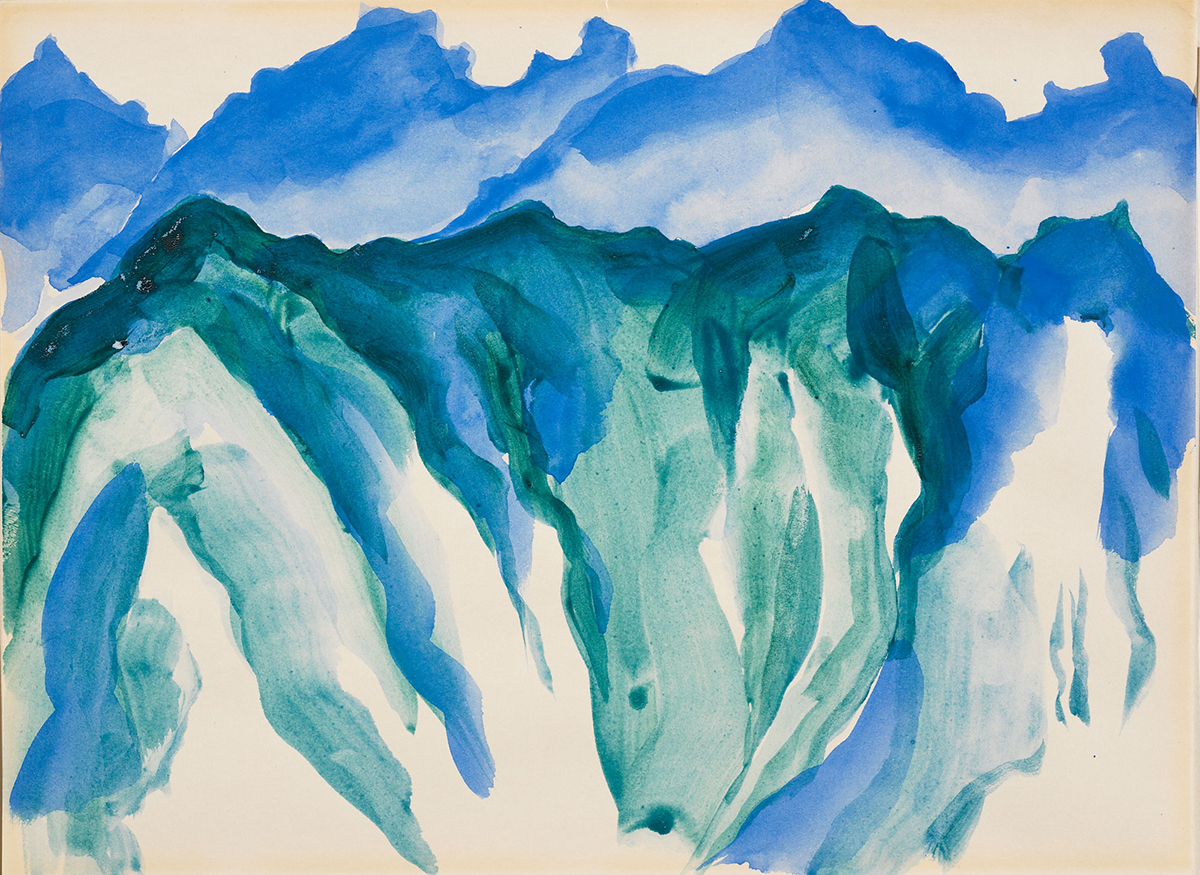
“O’Keeffe’s Canyon series of watercolors includes some of my favorite works on paper, and this piece has everything I find seductive and satisfying about those works. She takes epic landscape and makes it glow and has majestic, moody, and personal feelings with such economy of marks and color. I’m always in awe of her.” –Amanda Valdez
About this Work
Perhaps the most famous female artist in America, Georgia O’Keeffe studied at the Art Institute of Chicago in 1905 and 1906 before continuing her education in New York at the Art Students League, where she studied with William Merritt Chase from 1907 to 1908. From Chase, O’Keeffe learned the importance of mastering the artist’s materials, and she explored in sequence the possibilities of charcoal, watercolor, and pastel before turning primarily to oil in 1924. Although she ultimately rejected Chase’s realist approach, O’Keeffe praised his teaching, which “encouraged individuality and gave a sense of style and freedom to his students.” O’Keeffe developed a unique style of abstraction characterized by a simplification of forms, and through her relationship with photographer and gallery owner Alfred Stieglitz she was able to exhibit her work on a regular basis, a fortuitous circumstance for a female artist at that time. Inspired by nature, O’Keeffe is best known for her depictions of flowers, shells, bones and the landscape. In Machu Picchu, Peru, the artist evokes the mountainous region where the pre-Columbian Incas settled.
Georgia O’Keeffe, Machu Picchu, n.d., Watercolor on paper.
Learn more about this artwork
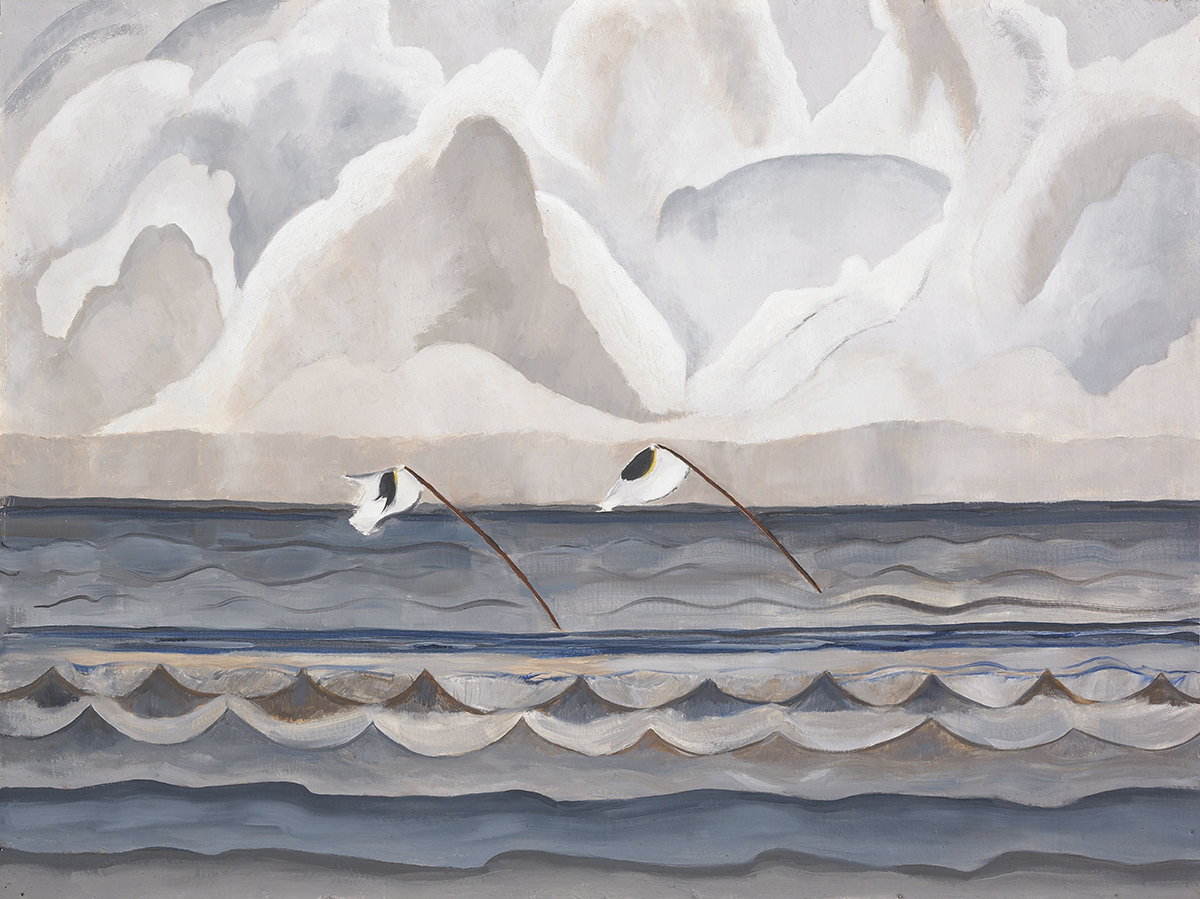
“Beautiful rhythmic waves become pattern, clouds become geographical in nature. The color palette is calm but brewing. I love the bold confidence of the shapes and the approach to landscape in this piece.” –Amanda Valdez
About this Work
Helen Torr and her husband, the modernist artist Arthur Dove, lived in Huntington for many years. During the 1920s, aboard their yawl Mona, they moored in the Huntington, Centerport, Northport, and Lloyd Neck harbors, wintering at the Ketemowoke Yacht Club in Halesite. Oyster Stakes, painted in the summer of 1930, depicts a view in Huntington Harbor. The rhythmic waves and windblown flags give the work a lyrical and decorative quality, which characterizes much of Torr’s work. Long overshadowed by Dove’s prominence, Torr’s work was forgotten until her sister Mary Rehm brought it to the attention of Heckscher Museum director Eva Gatling in 1972. Gatling mounted an exhibition of Torr’s work, and subsequent reappraisal has restored Torr’s place among America’s early modernist artists.
Helen Torr, Oyster Stakes, 1929, Oil on paperboard.
Learn more about this artwork
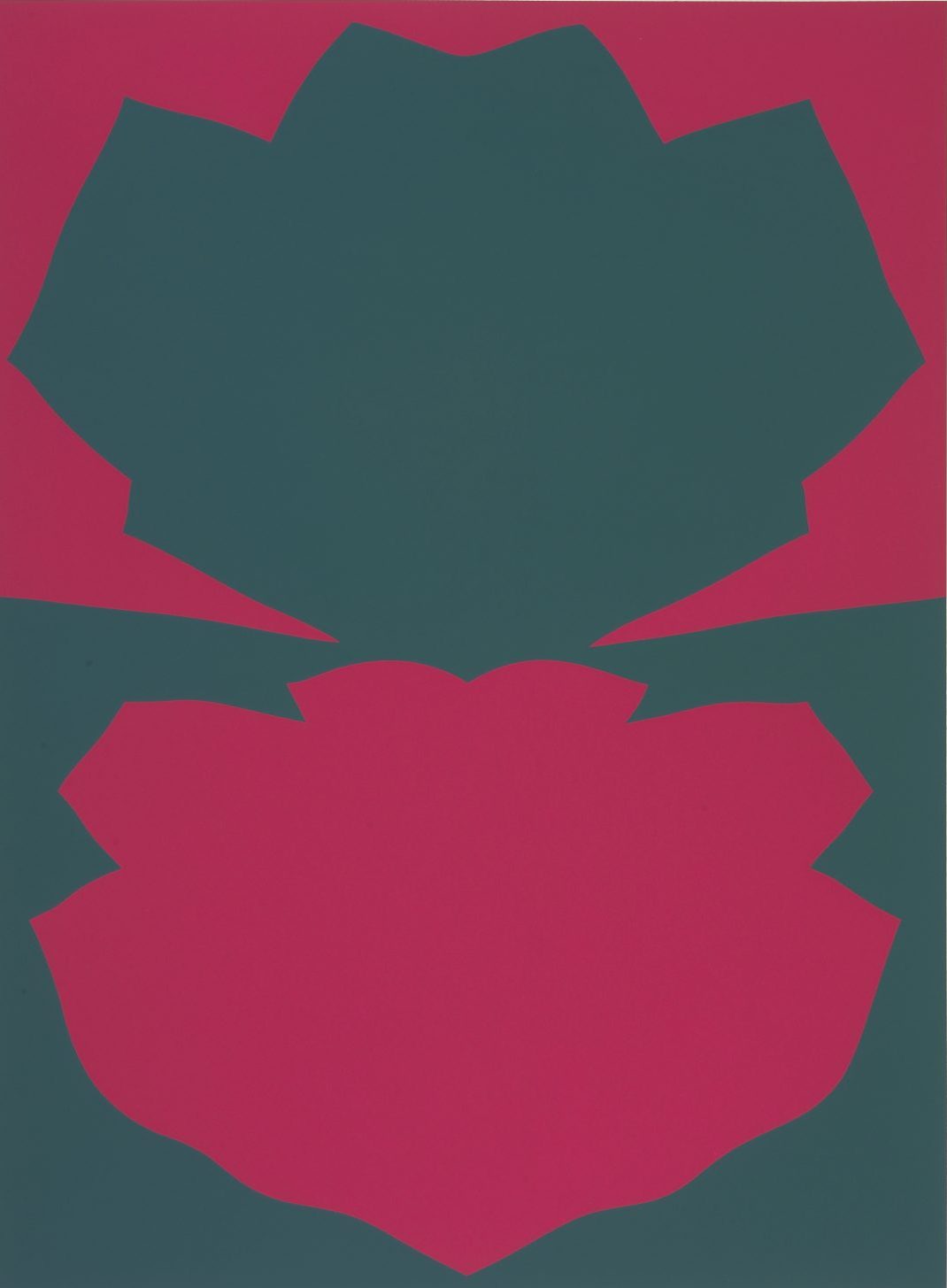
“I love the hardedge powerful irregular shapes in this work. Attention to detail of shape to edge, weight of object—these details are equally important when I am composing shapes. The line between the two shapes is the whole tension of the piece.” –Amanda Valdez
About this Work
After serving in World War II, the Kentucky-born artist Jack Youngerman took advantage of the G.I. Bill, traveling to Paris and studying at the École des Beaux-Arts. In his European travels, Youngerman encountered the woodcuts of Wassily Kandinsky and Hans Arp, and the cutouts of Henri Matisse. He also came to know American expatriates Ellsworth Kelly and Alexander Calder, who became his mentor. Like Kelly and Calder, Youngerman was influenced by an older generation of artists from the 1930s who employed hard-edged, geometric abstraction.
Urged by artist and gallerist Betty Parsons to join the booming New York art scene, Youngerman returned in 1956 to the United States, where he joined a group of younger artists that included both Kelly and Robert Indiana. During this time, Youngerman began experimenting with reversible figure-ground compositions, or what he called, ‘composition by opposition,’ in which the foreground and background interchange, creating a kaleidoscopic rotation of give and take. Inspired in part by the Op Art movement, Youngerman’s figure-ground reversals are based on the optical illusion created when positive and negative elements attract our attention equally. The interaction between positive and negative space persuaded him to limit his palette to two or three contrasting colors.
Jack Youngerman, Changes (4), 1970, Serigraph on paper.
Learn more about this artwork
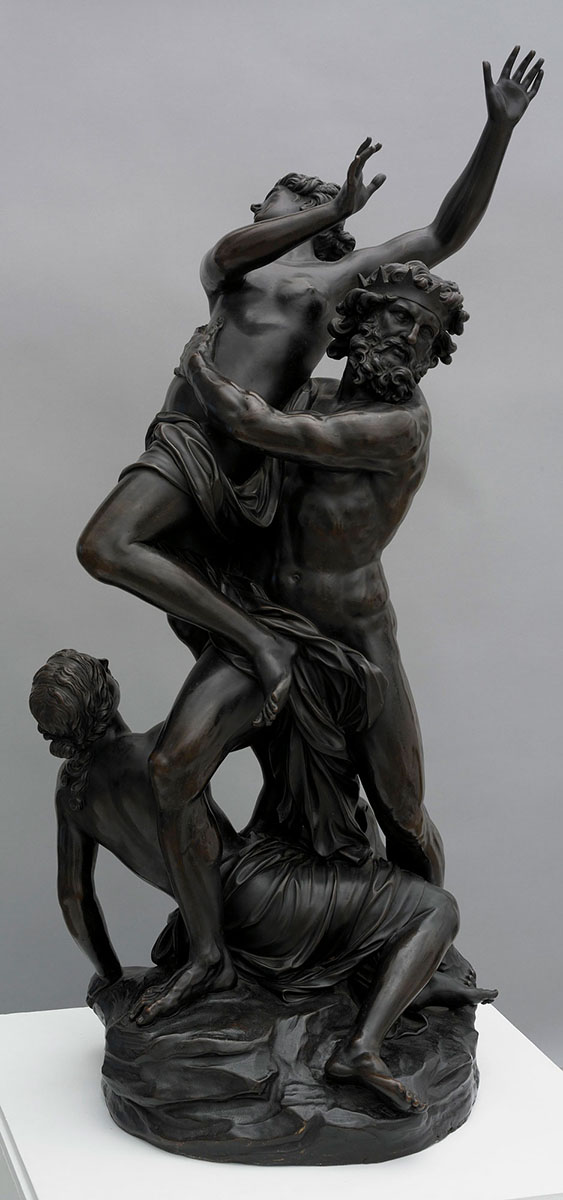
“I approach art history and contemporary art through a feminist lens: questioning the maker, means of production, content, and critical context. I am currently researching feminist art history in Italian art for a book project. The Rape of Proserpine and many other images of mythical origin or biblical basis offer plenty of space to insert a feminist re-contextualization. A good question to start with is: why was the church and state so invested in repeatedly commissioning images of women being subjected to the abusive and controlling rule of man? And how did myth provide a cover for their investment in these thematic tracks?” –Amanda Valdez
About this Work
Between 1670 and 1700, Francois Girardon oversaw much of the sculptural production for Louis XIV’s many building projects. Originally commissioned for the Parterre d’Eau garden at Versailles, The Rape of Proserpine was to have been one of four monumental marble groups depicting scenes of abduction that were intended to mark the garden’s corners. Although the Parterre was never completed, Girardon’s marble was placed in Jules Mansart’s Colonnade.
Girardon’s subject derives from Ovid’s Metamorphoses. Pluto, the god of the underworld, fell in love with and abducted Proserpine, daughter of Demeter, the goddess of agriculture. Demeter’s grief was so great that Pluto was persuaded to allow Proserpine to return from the underworld for six months each year, thus explaining the change of seasons according to classical mythology.
This bronze version of Girardon’s sculpture was probably cast from a clay model that would have been used to guide the carving of the monumental marble. At least several bronzes exist, in two known sizes. They were cast in sections, and the bases differ from one another in their delineation of the rocky outcrop on which the figures are placed. The Rape of Proserpine is Girardon’s most important sculpture; composed of three figures interlocked in a complex spiral, it rivals the work of the master of Italian Baroque sculpture, Gian Lorenzo Bernini.
Francois Girardon, The Rape of Proserpine, 1693, Bronze.
Learn more about this artwork
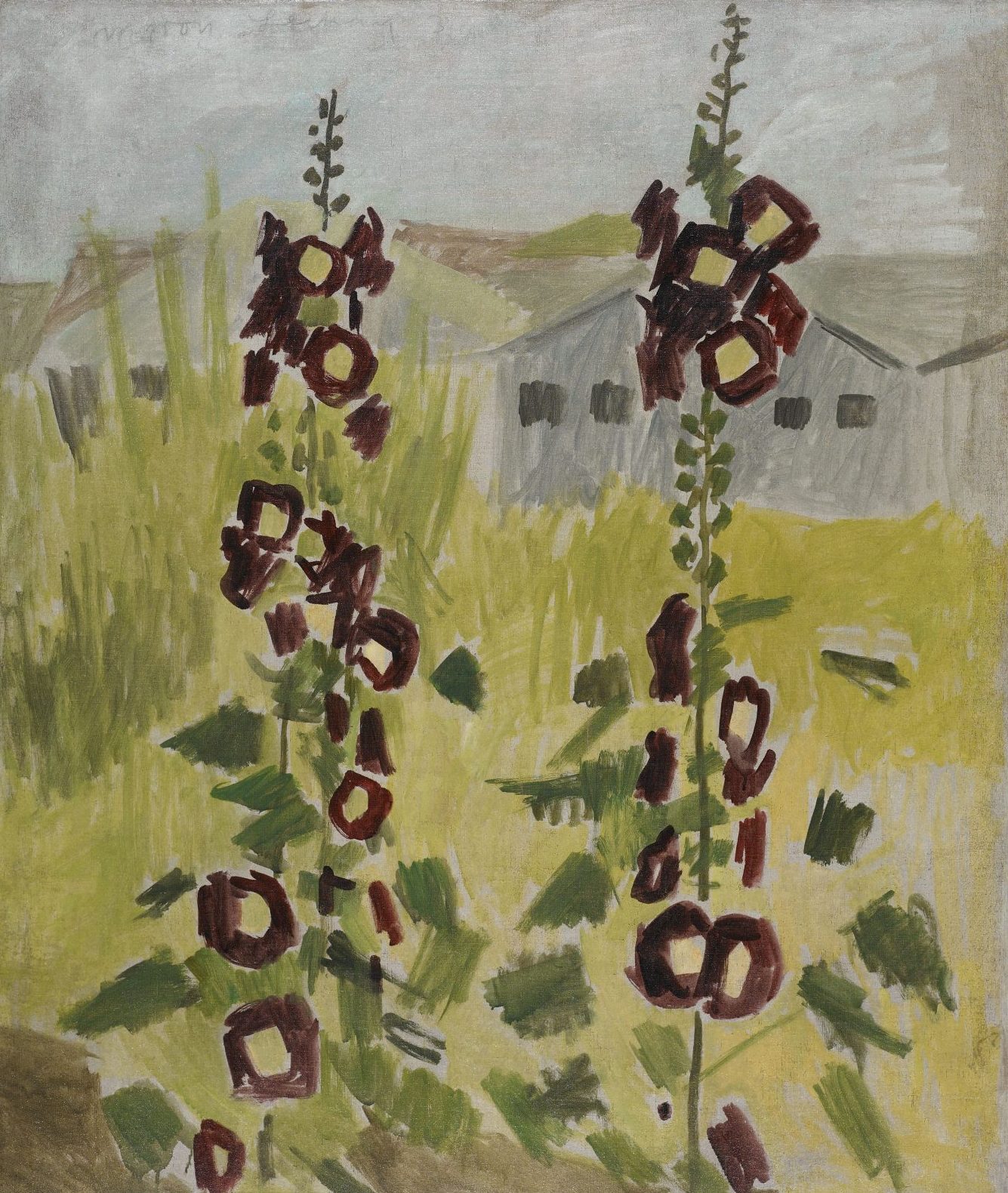
“While the painting has a subdued color palette, I like to look over the blocky somewhat frantic mark making. Its looseness feels fresh, and the hollyhocks coming straight out of the foreground make it feel like a portrait of two entities. It’s not fussed over and that’s either a gift or confidence.” –Amanda Valdez
About this Work
This thinly painted landscape, which may depict Nantucket or Marblehead, MA, is characteristic of Myron Lechay’s work. In the 1920s, the artist was a member of modernist art groups in New York City, including the Whitney Studio Club and the Société Anonyme. During the Great Depression, he worked for the Federal Art Project in New Orleans. He wrote, “What the painter paints is a visual field, a relation among the colors of things as a color-to-color field.”
Myron Lechay, Landscape with Hollyhocks, 1920s or 1930s, Oil on canvas, mounted on panel.
Learn more about this artwork
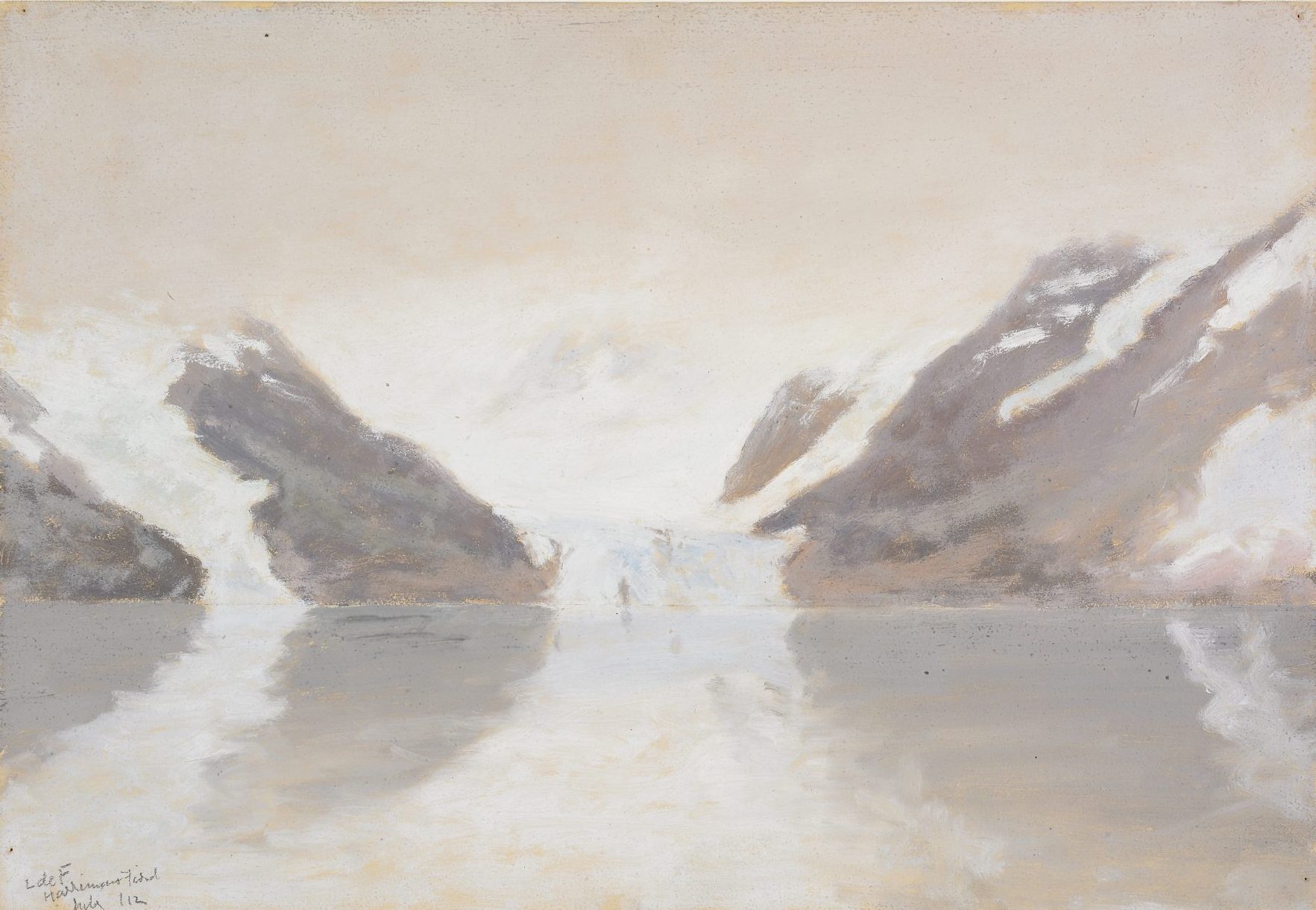
“I have a paradoxical admiration for this work, for the eerie quietness it emits in the face of epic landscape. Yet knowing the means of exploration—the human and ecological impact and harm that Western probing into uncharted territory has caused—gives me pause in appreciating this beautiful painting. The color palette and tone remind me of the contemporary painter Luc Tuymans.” –Amanda Valdez
About this Work
Lockwood de Forest was born into a sophisticated New York family whose extended European tours in the 1860s inspired the artist’s life-long interest in travel. Later, he visited the Far East and North Africa, as well as the American West and Pacific Northwest. He traveled to Alaska in 1912 where he painted coastal and glacial landscapes, studying the distinctive geologic and atmospheric conditions of the subarctic.
A fiord or fjord is a narrow inlet created by glacial erosion. Harriman’s Fiord is known for its tidewater glaciers that calve large pieces of ice into the surrounding water. It was named for Edward H. Harriman, a wealthy railroad industrialist who sponsored the 1899 Harriman Alaska Expedition to explore and document the region. A select group of scientists, artists, photographers, and environmentalists accompanied Harriman for two months, studying the coast from Seattle to Siberia.
Lockwood De Forest, Harriman’s Fiord, Alaska, 1912, Oil on paper.
Learn more about this artwork
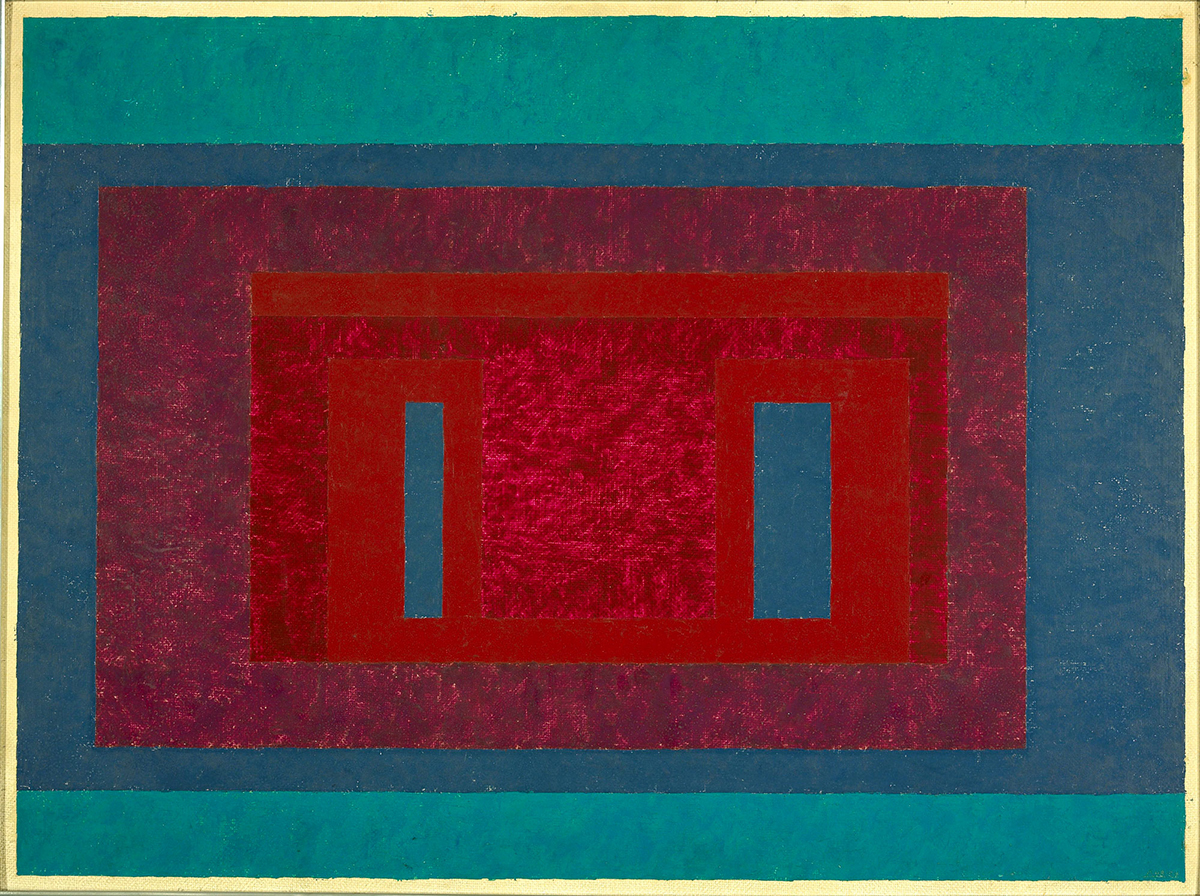
“When I think of Albers, I think of flat planes of color. This earlier work has a texture to the paint application that gives it depth and a glow.” –Amanda Valdez
About this Work
One of the most influential art teachers of the 20th century, Josef Albers studied and then taught at the Bauhaus, the school of design directed by Mies van der Rohe in Weimar, Germany. When the Nazis forced its closure in 1933, Albers immigrated to the United States and took a post at the experimental Black Mountain College in North Carolina, where he began a life-long investigation of color. Working with varying hues in a standard format, he executed a series of paintings that explored perception and optical effects. Albers continued his experimentation at Yale, where he served as Department of Design chairman from 1950 through 1959, settling on a format of three or four squares of varying opaque colors nested within one another. The famous Homage to the Square series, which occupied Albers from 1950 until his death, explores effects of perception, such as spatial illusion, perceived movement across the flat picture surface, and the interaction of adjacent colors to produce tonal variation, all of which may be seen in Coastal. Numbering over 1,000 works, the Homage to the Square paintings earned Albers the first one-person exhibition ever given to a living artist at the Metropolitan Museum of Art in 1971.
Josef Albers, Coastal, 1948-54, Oil on masonite.
Learn more about this artwork
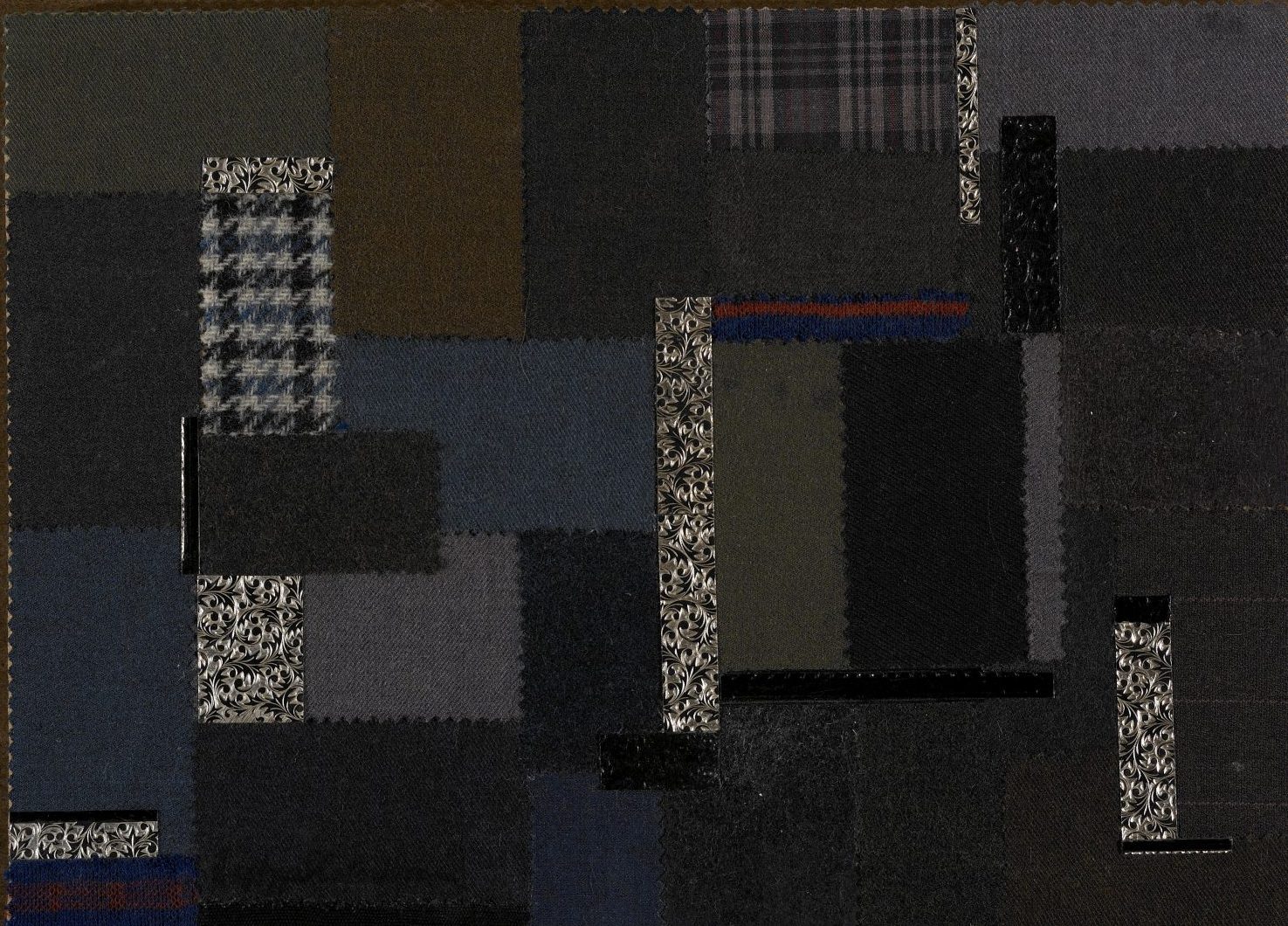
“This beautiful little cut geometric cloth collage references quilting just as equally as a dark Piet Mondrian painting. I’m drawn to the depth that is created with the pops of little black and white freckled cloth; it keeps it from being too flat.” –Amanda Valdez
About this Work
Esphyr Slobodkina’s creative life found expression in a wide range of artistic media and in many related fields, including interior design, architecture, textiles, millinery, and dressmaking. She is probably best known, however, as the author and illustrator of the children’s classic Caps For Sale. Born in Siberia, Slobodkina immigrated to the United States in 1928 and the following year enrolled at the National Academy of Design in New York.
Esphyr Slobodkina, Midnight Blues, 1950s, Cloth collage on board.
Learn more about this artwork
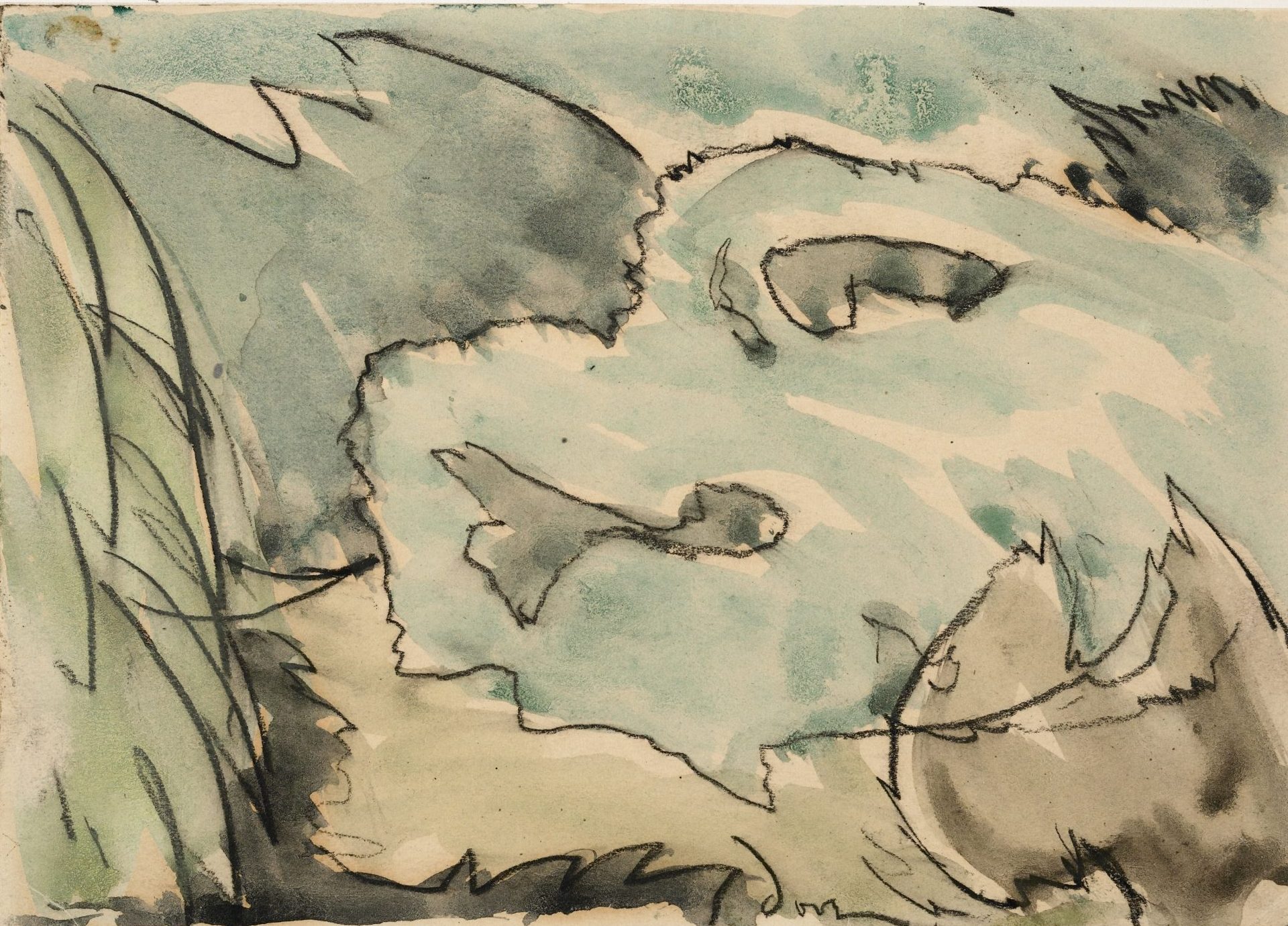
“I love how loose this drawing is. It feels observational but pushed to loose movements of the landscape and the way his watercolor is quickly reacting to a changing atmosphere. All my works start from drawing and I find it’s where you can discover the raw vision bubbling up or expelled out of artists.” –Amanda Valdez
About this Work
Dove was one of the first artists to paint pure abstractions. In his ‘extractions,’ as he called them, Dove sought to distill simplified forms and colors from observed landscape in order to express the essential spirit of nature. This watercolor, small and intimate in scale, dates from Dove’s late Centerport years when poor health confined him to his cottage. His works, based on natural scenes actually observed from the cottage or drawn from memory, powerfully evoke nuances of weather and the natural landscape so important to him throughout his life.
Arthur G. Dove, Centerport Series #20A, 1940, Watercolor on paper.
Learn more about this artwork
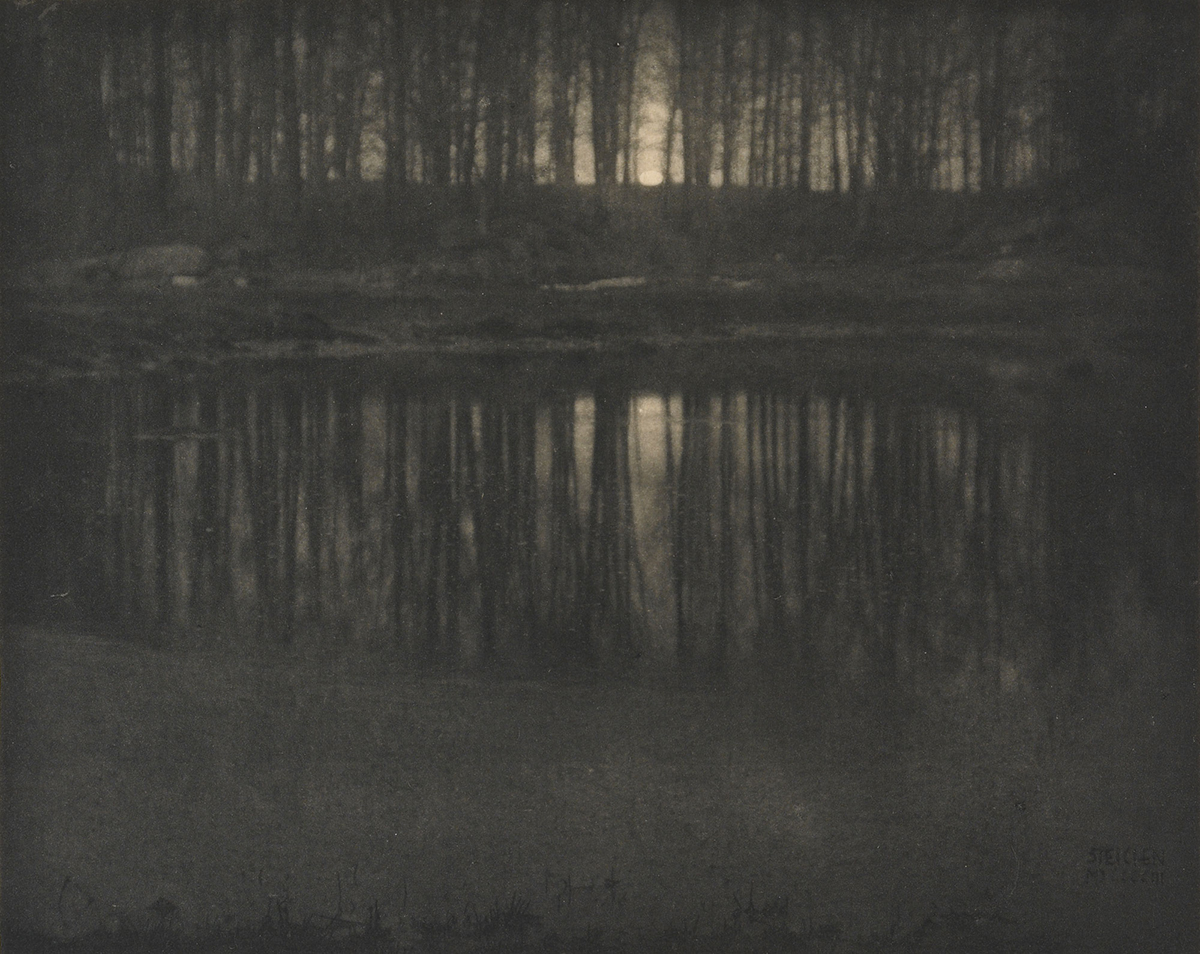
“Speaking of the time travel aspect of looking at other artists’ images of the moon, I love thinking about how Steichen sat out in the night forest, framed this image, then waited in stillness while he let the exposure go for a long time to capture the moon coming up over the pond. The pursuit of the moon always feels eternal to me; I think about the mood the artist was trying to convey.” –Amanda Valdez
About this Work
Edward Steichen’s photography career spanned six decades. He was one of the founding members of the Photo-Secession, a group of photographers formed by Alfred Stieglitz in 1902 that sought to promote photography as a fine art. Believing that it should be judged by the same aesthetic criteria as painting, the pictorialist photographers, as they were known, manipulated their medium using techniques such as soft focus and double exposures to create works that suggest Impressionist, Art Nouveau, and Symbolist sensibilities. Best known for his portraits of prominent personalities, including Auguste Rodin and Henri Matisse, Steichen also produced evocative landscapes such as Moonlight: The Pond, which depicts a scene in Mamaroneck, New York.
Steichen’s association with Stieglitz extended beyond the activities of the Photo-Secession. As Stieglitz’s emissary in Europe, Steichen selected modern art by European and American artists to be exhibited at Stieglitz’s New York galleries, where many avant-garde styles were first introduced to America. During World War I, Steichen worked as chief of aerial photography for the American Expeditionary Forces, which introduced sharp-focus detail into his work, and in the 1920s he turned to fashion photography, working as chief of staff at Vogue and Vanity Fair. In 1947, Steichen became director of photography at the Museum of Modern Art, where he curated the influential Family of Man exhibition in 1955.
Edward Steichen, Moonlight: The Pond, 1906, Rotogravure.
Learn more about this artwork
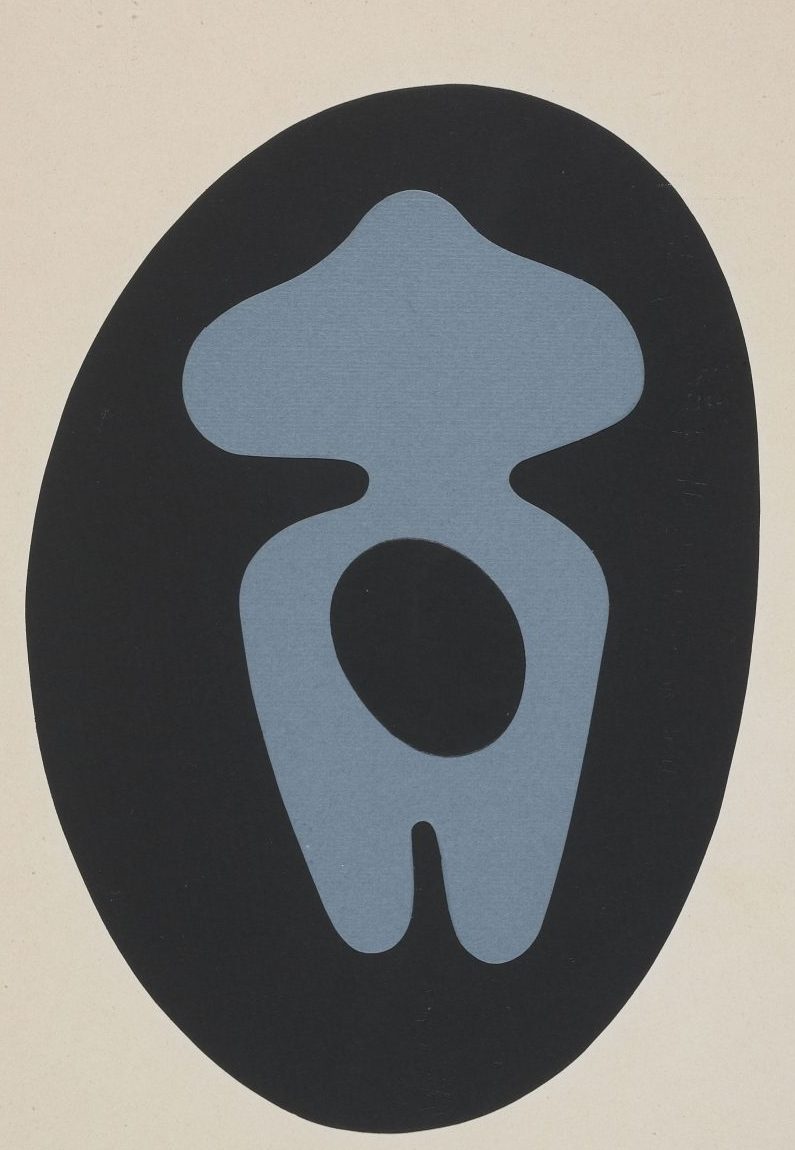
“I recently studied ancient goddess figurines, symbols, and images from early Europe, so this rings as a mother vessel. I love that she is contained within her own sack, while holding the space of her own creation. My piece Nine-Patch Tanit (2017) [below] is a quilted version of the goddess with upraised arms who makes a bowl out of her body to contain the universe.” –Amanda Valdez
About this Work
In this collage, sculptor Jean Arp creates an abstraction that subtly suggests an amoeba, egg, or life form. While most of his fellow Surrealists evoked the subconscious through representation or figures, Arp was one of the few to do so through abstraction. Undulating biomorphic forms were central to his artistic style.
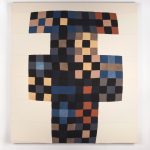 Jean (or Hans) Arp, Abstraction, n.d., Collage on paper.
Jean (or Hans) Arp, Abstraction, n.d., Collage on paper.
Learn more about this artwork
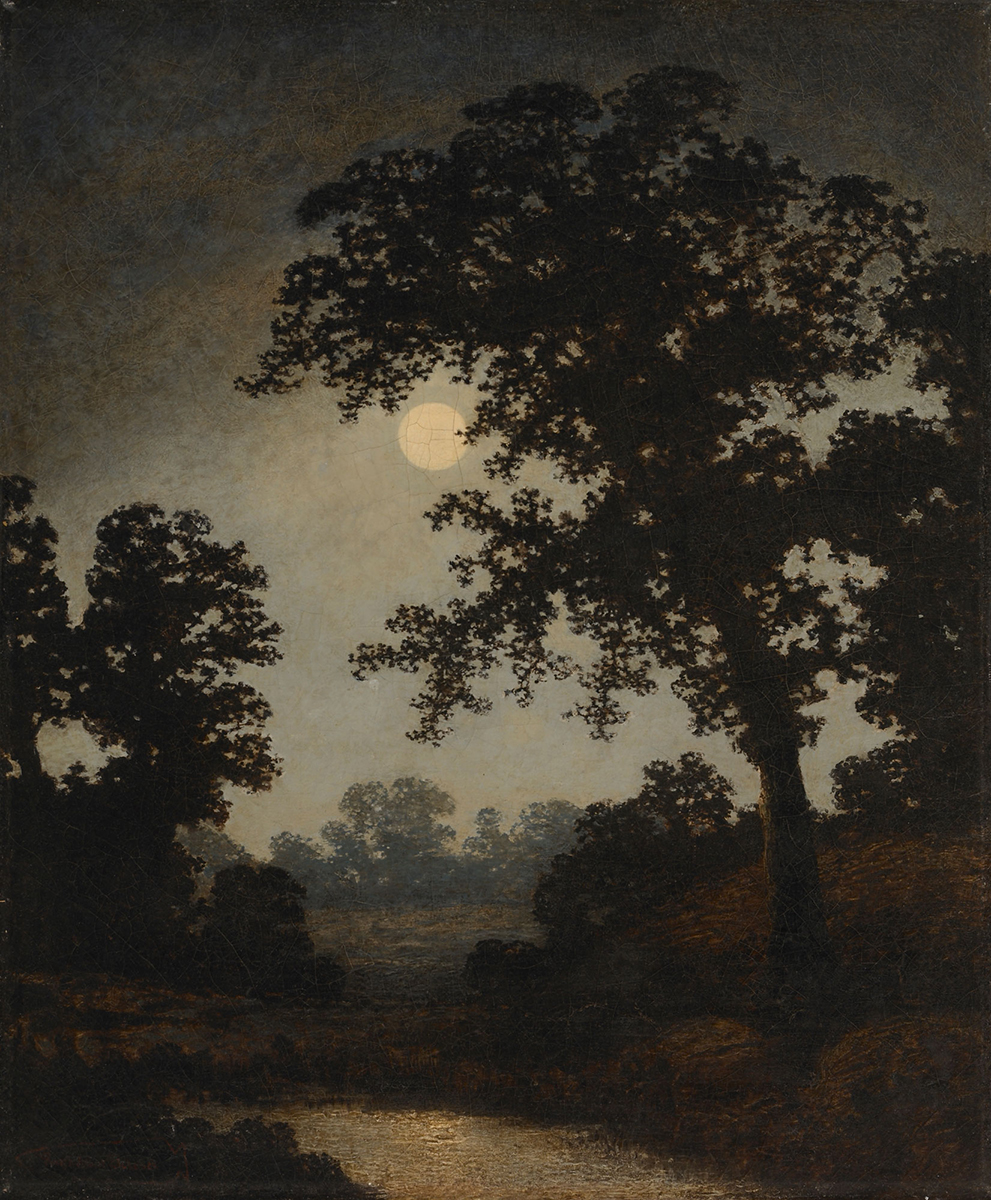
“Having created a whole exhibition (Time & Tide, 2016) dedicated to the study of the moon, I consistently gravitate towards its depiction. I came to think of the moon as a conduit of time travel connecting me to fellow humans over hundreds of years who have spent time ruminating on its beautiful and powerful presence in our celestial sky. In this exhibition, the work morning feelings (2016) [below] is my expression of lunar phasing within my shapes, reflecting the interiority and quietness the moon causes us.” –Amanda Valdez
About this Work
The visionary paintings of Ralph Albert Blakelock stand alone in American art. Blakelock was largely self-taught and his early works are realistic nature studies in the manner of the Hudson River School. In 1869, and again in 1872, he traveled to the West, sketching the landscape and Indian life. By the 1880s, the artist’s idiosyncratic style had become less concerned with description than with light effects, design, and texture. In his dramatic moonlit scenes, such as The Poetry of Moonlight, the strong silhouette of the foreground trees creates a surface pattern across the canvas at odds with the three-dimensional space evoked beyond.
Blakelock’s large family of nine children caused him great financial and emotional stress and in 1891 he suffered a nervous breakdown. Eventually diagnosed with schizophrenia, his behavior became erratic and unpredictable, and in 1899 his mental state necessitated institutionalization, first at the Long Island Hospital at Kings Park, and subsequently at the Middletown (N.Y.) State Hospital where he spent much of the remainder of his life. Shortly after Blakelock was first hospitalized, his work began to achieve critical and commercial success. By 1903, forgeries began to appear, becoming quite common the following decade and making Blakelock scholarship particularly problematical to the present day.
In 1916, a moonlight scene, Brook by Moonlight (Toledo Museum of Art), brought an unprecedented $20,000 at auction, the highest price ever paid at auction for a living artist. August Heckscher must have especially liked Blakelock’s work, as he acquired five of his paintings before 1920, making him the best represented artist in his collection.
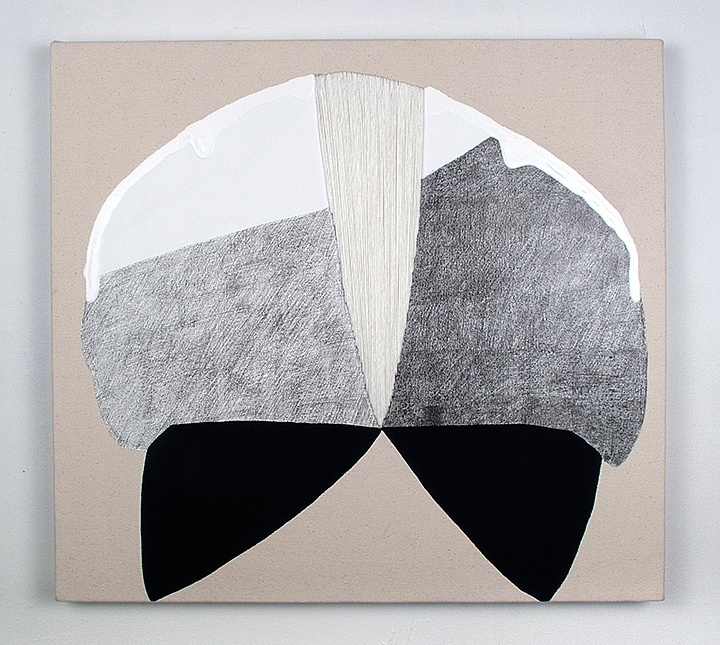 Ralph Albert Blakelock, The Poetry of Moonlight,
Ralph Albert Blakelock, The Poetry of Moonlight,
c. 1880-90, Oil on canvas.
Learn more about this artwork
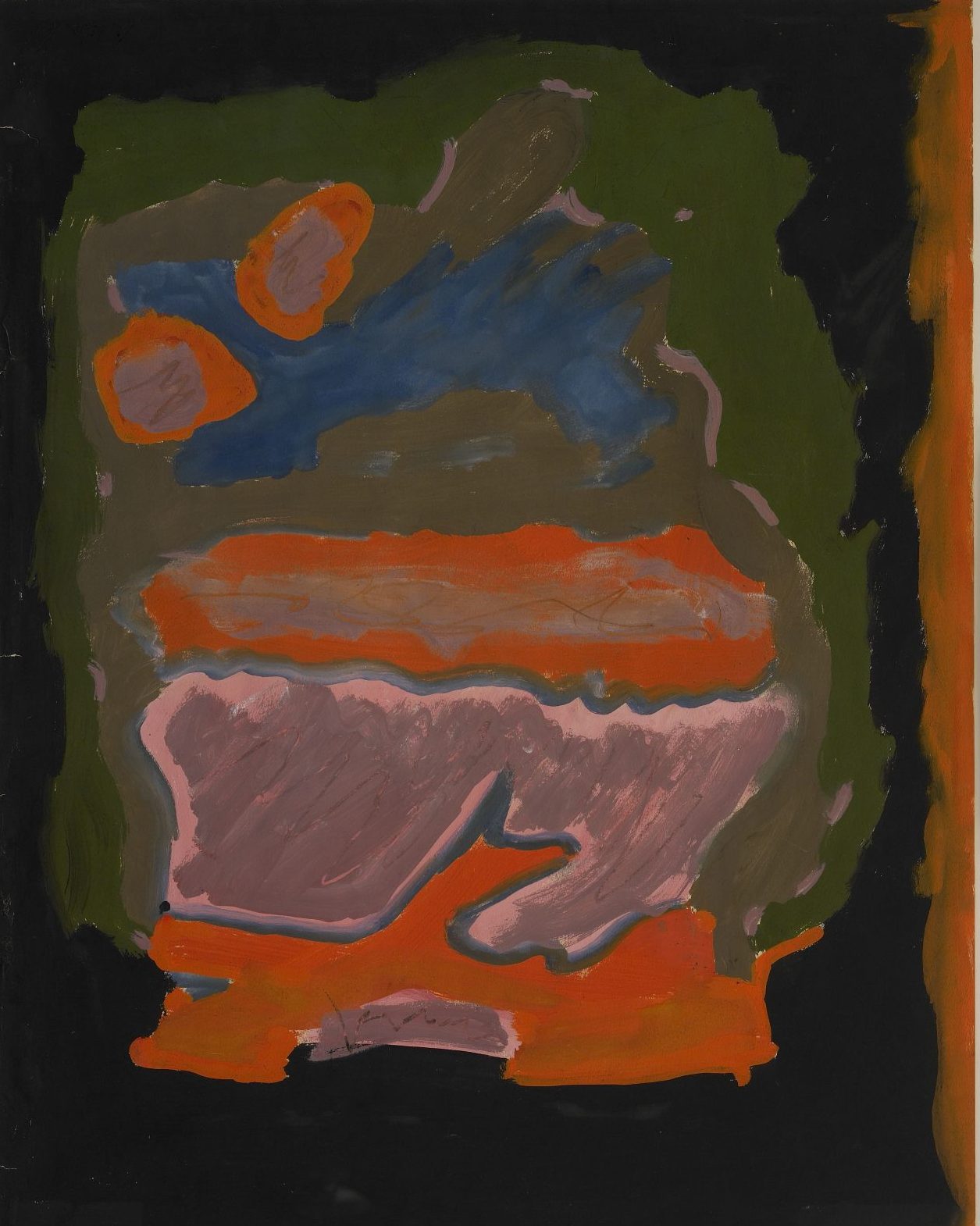
“Painters are always attempting to make ugly colors beautiful and beautiful colors ugly. She’s doing that here and I love the glow the desaturated mauve and pink is making against muddy browns and green. I have some of this same color pursuit in the oil stick pillars of honey badger (2017) [below], on view in Amanda Valdez: Piecework.” –Amanda Valdez
About this Work
Betty Parsons is best known for her pivotal role as an art dealer who championed modern art from the 1940s until her death in 1982. While her roster of artists is long and impressive, including Jackson Pollock, Mark Rothko, Clyfford Still, Barnett Newman, Robert Rauschenberg, Hans Hofmann and many others, Parsons always thought of herself first as an artist. She was inspired by the modern art she saw at the legendary Armory Show, the 1913 exhibition that introduced modern art to America, and decided, at the age of 13, on a career as a sculptor. In the 1920s, she lived in Paris, taking art classes at la Grande Chaumière and studying sculpture with Emile-Antoine Bourdelle, whom she had most admired at the Armory Show, Alexander Archipenko and Ossip Zadkine. Her earliest paintings were realist landscapes and portraits, but in 1947, in trying to depict the color, noise, and excitement of a visit to the rodeo, she turned to abstraction. Her works, executed in response to her environment, are exuberant and whimsical, with colorful shapes that float across broad areas of flat color.
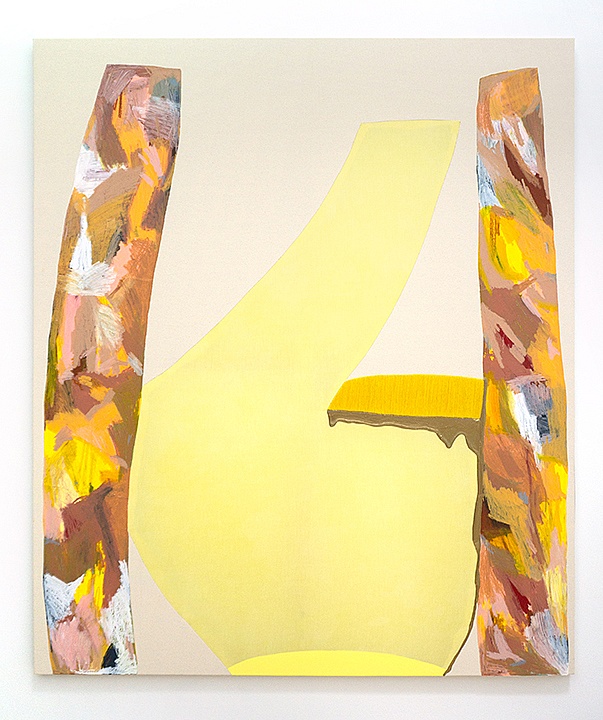 Betty Parsons, Untitled, 1960, Gouache on paper.
Betty Parsons, Untitled, 1960, Gouache on paper.
Learn more about this artwork


